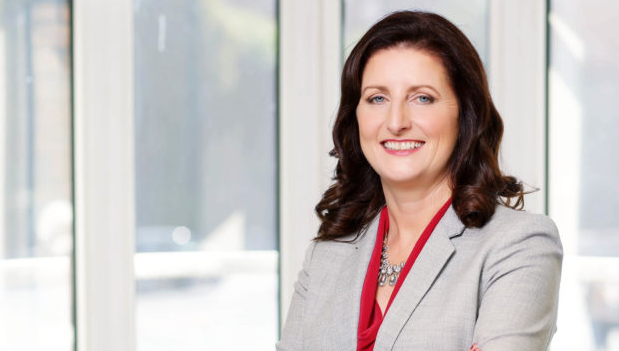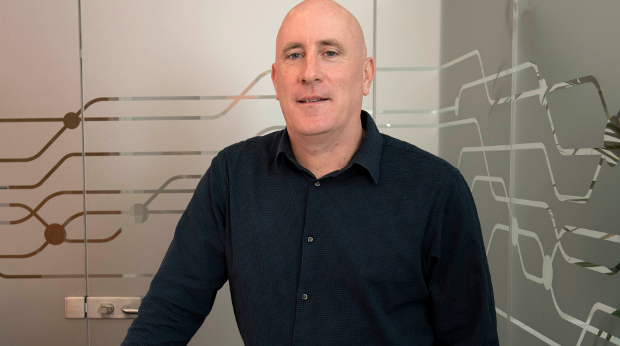
The art of assessing new technology
In the ever-flowing river of technology it can be difficult to decide whether or not the latest trend is going to change everything or is just another piece of flotsam.
And yet, a decision must be made: should businesses invest in any given technology, and on what basis can they make such a decision?
The risks are real, though: fail to adopt a transformative and industry-changing technology and your business could be hobbled; adopt a dead-end tech and time and money are poured away like spoiled milk.
The answer, of course, is proper assessment, but that may be easier said than done.
Working methodology
Tadhg Cashman, services director at Logicalis Ireland, said that sometimes decisions are made for the wrong reason – or at least without a good working methodology.
“We have seen customers try to apply the latest and greatest – for example, data analytics and machine learning – and they haven’t always been able to realise the business benefits of the technologies,” he said.
Edel Creely, founder and group managing director of Trilogy Technologies, agreed that the pace of change can seem breath taking.
It is also a constant rather than simply a question of finding the right tool for a specific job.

“It’s a very accelerated market, and increasingly so,” she said.
“I’ve been in the industry since before the Internet was the backbone of business. It was a very different world then, and the pace of change was very different.”
Some developments, such as the growth of the cloud, have proved particularly challenging, she said.
“Particularly as [the] cloud has come along, people now have even more decisions to think about, starting with ‘is it right for me to go with a cloud platform or should I go on-premises.”
Creely said that the cloud has hidden some of the risk from the decision-making process and that companies need to be aware that just because it cannot be so easily seen does not mean it is no longer there.
“There is an attitude of ‘just get it from the cloud’. Well, OK, but how do I get ‘it’ from the cloud? From whom? And how do I manage it?”
Goal-oriented
In addition to meeting a business goal, the specific nature of the goal must contribute to the decision-making process.
“I think in terms of new technology and organisations making new decisions, there are core operational needs that must be considered. The change can be driven by technology becoming obsolete, but it can also be to drive growth, to re-shape the employee experience or re-shape the customer experience,” she said.
It is not just the amount of new technologies, either, or the pressure of keeping up with the pack. One crucial issue is that assessing new technologies has become complex due to the very complexity of what these technologies do.
Rob Curley, managing director of Singlepoint, said that much of the low hanging fruit has already been picked.
“A lot of it is that things have gone from basic enough on-premises [systems] to complex services. The cloud is not just hosting applications, but people are using it to deploy new, custom applications,” he said.
“It’s a challenge [even] for companies like us and we’re an advanced AWS partner. They’re releasing new technologies like AI [artificial intelligence], ML [machine learning], chatbots and even hosted contact centre technologies.
“Keeping up with all of that it is really tough,” he said.
Pace of change
Of course, assessing new technologies is a task that falls right onto the desk of IT professionals.
Or at least, now it does.
Logicalis’ Cashman said that research it performed indicated that assessing what new technologies need to be engaged with is a key responsibility for chief information officers (CIOs).
“We do a global CIO survey within Logicalis,” he said.
“In November 2018, we had over 800 tell us about their role, and the interesting thing is that CIOs are being tasked more and more to deliver new innovations in the business.”
This is part of a wider change in the nature of the CIO’s role as businesses digitally transform, he said.
Logicalis found that 83% of CIOs are now directly involved in driving innovation.
“In the past, it was about keeping the lights on, keeping systems available. Now it’s different: it’s really about facilitating how new technology can be adopted in large organisations.”
The key factor must always be business utility.
“Most of the time we evaluate it [any new technology] on the basis of customer needs, not just on the basis of the technology [itself],” said Singlepoint’s Curley.
“We want to meet customer needs,” he said.

Curley gives the example of whether or not a public cloud solution is the right one: sometimes it is, sometimes it is not.
“How a company goes to the cloud is a big decision. Will they build out as cloud native, using the cloud providers’ services? With that there can be degree of vendor lock-in. Or do you try and deploy [hybrid and custom] solutions that don’t produce lock-in?”
Curley said that firms like Singlepoint work hard to deliver custom solutions based on common working experiences. This means that new platforms can be deployed without constantly re-inventing the wheel.
“We built out our Digital Acceleration Platform [DAP] on the back of doing the same thing over and over again for customers,” he said.
“We wanted to take the pain out of deploying mobile and web applications. Customers came to us with similar requirements, often wanting to build a self-care platform, so we built out the capabilities functionalities, security, how screens are generated, and so on, and packaged it up and then we deploy it out to the customer,” he said.
Key questions might include, does a new technology help the business meet its customers where they are, and, is this technology going to last the distance?
In addition, it is essential to consider how well it will integrate with existing business processes.
Unfortunately, rational business-led decisions are not always the driving force.
‘Techno-joy’
Cashman said that the power of hype, or even simple ‘techno-joy’, can cloud decision making.
“What we see is that very often people will go to a conference or read about something and come steaming back in and pull in operations or IT and say ‘we want to do this’,” he said.
“Things like, ‘We want to migrate to the cloud within the organisation’. Well, sometimes that’s not possible, or a good idea. You have to have a proper organisational structure. You can’t throw a technology in and expect it to work overnight. It just doesn’t work like that,” he said.
Trilogy’s Creely said that the board must drive the process – and therefore the board must include serious representation for IT.
“Preferably, it’s a board level decision or senior person in the business who wants to see the various technologies.
“It’s about developing an IT strategy, and IT has to be strategic these days is the core of the modern business,” she said.
A helping hand
The obvious decision to take, particularly in an era where more and more IT is delivered by specialist service providers, is to seek external help.
Vendors, of course, are a logical starting point, but they are also trying to sell their particular solutions.
Service providers and systems integrators, then, may be called on to provide a more disinterested overview of both the technology landscape and any individual technology within it.
Cashman said that serious service providers will try to find out what the question really is, and only then suggest a technology.
“I think it depends on the type of business that you are: some organisations are well set up to manage new technology adoption in a structured way. Some are not, and they should lean on their business partners and vendors to get that process right.
“We [at Logicalis] place a lot of emphasis on technology roadmap planning and helping our customers with new technology adoption,” he said.

“It’s not an easy thing to get right and what you need to do is seek the expertise of service providers who can look at the business application for new technologies,” he said.
“We have a service framework, which we have developed with extensive expertise and a good track record on risk mitigation. A big part of it is trying to understand the customers’ business requirements and what their success factors are. the technology only comes after that; it really starts with the business outcome.”
In a way, this brings IT into line with other business services, said Creely.
“It doesn’t make sense anymore for people to manage every aspect of their own IT, and particularly their IT security environment, anymore. Typically, the people who engage with us are the ones who do see that [the need for expertise] and are looking for it in a partner.
“Companies like us are needed just like companies need a good legal firm, a good accounting firm and so on,” she said.
In the end, said Cashman, making the right, or wrong, decision could just make or break a business.
“Companies need to be careful not to rack up a lot of additional expenses,” he said.





Subscribers 0
Fans 0
Followers 0
Followers